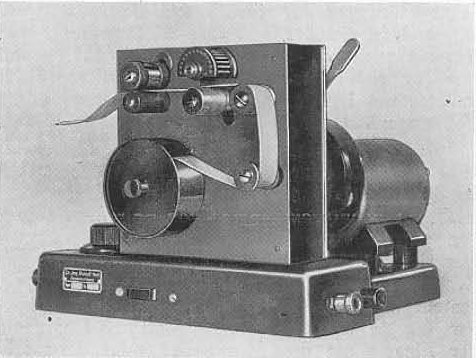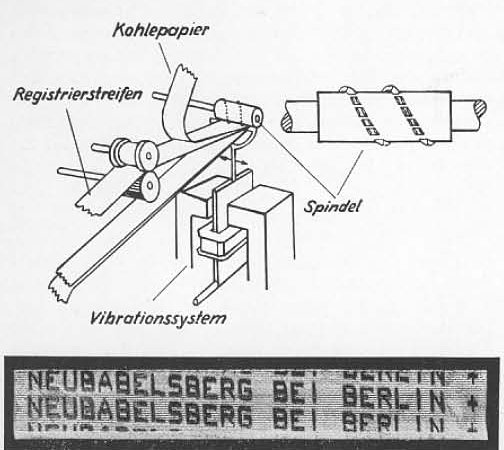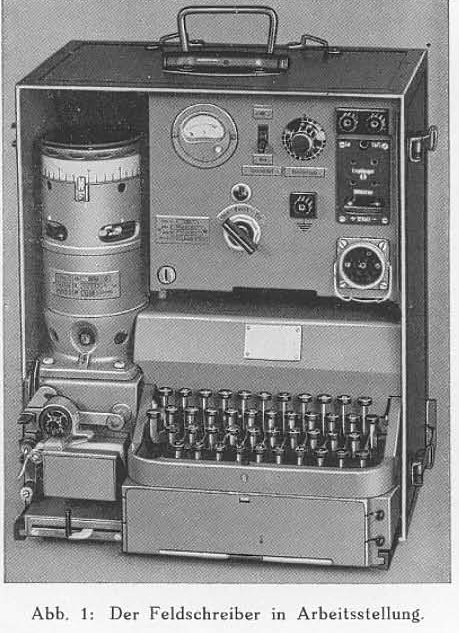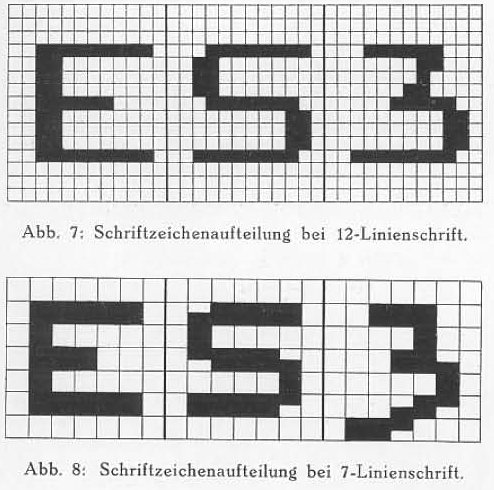Hellschreiber was patented in 1929, by Dr. Ing. Rudolf Hell, Germany and is still in use today using the original format.

The first prototype of the Hellschreiber 1929

Hellschreiber was the first successful direct printing text transmission system, and was very popular at a time when teleprinters were complex and expensive (the Hell receiving mechanism had only two moving parts).
At first the Hellschreiber was mostly used for land-line press services, which continued well into the 1980s.
A military version was used by the German Condor Legion during the Spanish Civil War (1933).
During WWII, Hellschreiber was widely used for field portable military communications, for which it proved to be very suitable because the equipment was simple and robust.
Today we use the term "Feld-Hell", or "Field Hell" for this system, to help differentiate it from the slightly different land-line press systems.
Each character of a Feld-Hell transmission is portrayed as a series of dots, in a matrix, just like the printing of a dot-matrix printer.
The dots are sent one at a time, rather like Morse code. Feld-Hell transmits in the following order - up each column from bottom to top, then up each successive column from left to right.
The HELL Feldfernschreiber (Army Hell printer)
Hell printing is a sort of facsimile or picture printing transmission system. The letters are made up of vertical lines which are drawn on paper tape by means of a hammer tapping on the inky threads of a quick threaded screw. The lines are arranged from left to right by moving the paper tape, which is transported to the left.
The pictures of the letters are transmitted in the form of on-off modulation of a tone or carrier, which is converted in the receiving apparatus to recognizable figures or letters.
Interference can distort tbe signal. but it is printed on the tape so that the recipient can use the vastly superior pattern recognition powers of his eye to work out what tbe message was.
The receiving apparatus does not have to make a decision in real time, as is the case with a Murray coded teleprinter.



